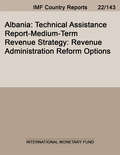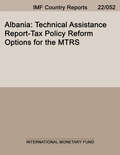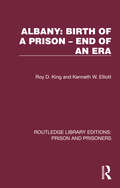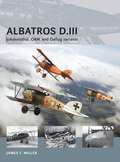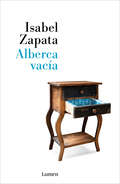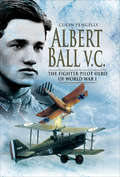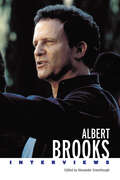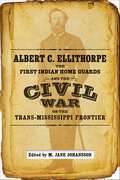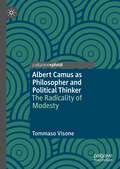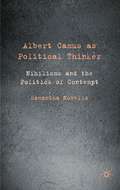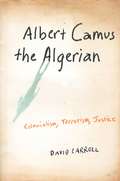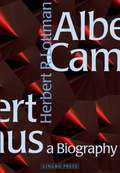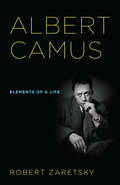- Table View
- List View
Albania: Selected Issues and Statistical Appendix
by International Monetary FundA report from the International Monetary Fund.
Albania: Sixth Review Under the Extended Arrangement Under the Poverty Reduction and Growth Facility, Request for a Waiver of Nonobservance of Performance Criterion, and Financing Assurances Review--Staff Report; Supplementary Information; and Press Release on the Executive Board Consideration
by International Monetary FundA report from the International Monetary Fund.
Albania: Technical Assistance Report-Medium-Term Revenue Strategy: Revenue Administration Reform Options (Imf Staff Country Reports)
by International Monetary Fund. Fiscal Affairs Dept.A report from the International Monetary Fund.
Albania: Technical Assistance Report-Tax Policy Reform Options for the MTRS (Imf Staff Country Reports)
by Dora Benedek, Aqib Aslam, and Narine NersesyanA report from the International Monetary Fund.
Albania: Technical Assistance Report—Investment Funds and Interconnectedness Risks
by International Monetary Fund. Monetary and Capital Markets DepartmentA report from the International Monetary Fund.
Albany: Birth of a Prison – End of an Era (Routledge Library Editions: Prison and Prisoners)
by Roy D. King Kenneth W. ElliottOriginally published in 1977, Albany: Birth of a Prison - End of an Era attempts to document and analyse some of the changes which happened in the first five and a half years of the prison’s opening and as far as possible account for them. Albany was planned and built as a medium-security establishment but the growth in the prison population meant it ended up, in part, as a maximum-security unit. At the time the prison was notorious, after a stormy series of incidents culminated in an alleged mass escape attempt and a riot, it had become known as the ‘jail of fear’ in which ‘mafia groups’ were said to ‘terrorize’ staff and prisoners alike. Despite the account inevitably being incomplete, it was hoped that lessons could be drawn, both for social research and social policy in regard to prisons.
Albatros D.I-D.II
by James MillerIn 1916 German aerial domination had been lost to the French and British fighters. German fighter pilots requested an aircraft that was more powerful and more heavily armed, and the Albatros design bureau set to work on what was to become an iconic aircraft design. By April 1916, they had developed the Albatros D.I, that featured the usual Albatros semi-monocoque wooden construction with a 160hp Mercedes engine and two forward-firing machine guns. Alongside the development of the D.I, Albatros had also designed and built a second machine that was similar to the D.I - the Albatros D.II. Although there were several external differences between the two aircraft, it is important to note that these machines evolved simultaneously and that the D.II was not the result of post-combat feedback from D.I pilots. With the inclusion of these aircraft into their reorganized air force, Germany was able to regain control of the skies by autumn 1916. Along with the later designs they inspired, the Albatros D.I and D.II were instrumental in allowing the Germans to prosecute their domination through 'Bloody April' and well into the summer months that followed.
Albatros D.III
by James MillerIn 1916, Imperial German aerial domination, once held by rotary-engined Fokker and Pfalz E-type wing-warping monoplanes, had been lost to the more nimble French Nieuport and British DH 2s which not only out-flew the German fighters but were present in greater numbers. Born-from-experience calls from German fighter pilots requested that, rather than compete with the maneuverability of these adversaries, new single-engine machines should be equipped with higher horsepower engines and armed with two, rather than the then-standard single machine guns. The Robert Thelen-led Albatros design bureau set to work on what became the Albatros D.I and D.II and by April 1916 they had developed a sleek yet rugged machine that featured the usual Albatros semi-monocoque wooden construction and employed a 160hp Mercedes D.III engine with power enough to equip the aeroplane with two forward-firing machine guns. Visual hallmarks of the D.I and early production D.II include fuselage mounted Windhoff radiators and matching chords for the upper and lower wings. Meanwhile, Albatros had already produced the prototype of the D.II's successor, the D.III. Influenced by the French Nieuport sesquiplane design, the D.III featured lower wings of reduced chord and single-spar construction, with the interplane struts now meeting the lower wings in a 'V'. After arriving at the Front en masse in early 1917, the Royal Flying Corps did not possess a fighter that could arrest the Albatros' onslaught against the RFC reconnaissance machines and thus they suffered appalling casualties in a desperate period known as 'Bloody April'. However, despite the D.III's success, the sesquiplane design led to structural flaws that resulted in the deaths of several pilots, which caused the type to be grounded until the lower wings could be strengthened or replaced. Still, even after their return to service, German pilots knew not to prosecute a dive too aggressively lest they invite structural catastrophe.Always chasing performance enhancements, by the time of 'Bloody April' Albatros had already designed and received a production order for the D.V.D.IIIs were manufactured concurrently but production was shifted to the Ostdeutsche Albatros Werke (OAW) in Schneidmuhl, where they received more robust construction. They differed little from their Johannisthal D.III brethren externally, save for a slightly different skin application on the nose and a D.V-type rudder, which had a curved rather than straight trailing edge. They also had Mercedes engines of 175 hp, versus the 160 hp engines of the Johannisthal D.III. Overall they benefitted from the teething experience of the earlier D.IIIs and avoided the structural problems that resurfaced with the Johannisthal-built D.Vs. In all, 500 D.IIIs and 840 D.III(OAW)s were produced and saw heavy service throughout 1917. They extracted a serious toll on the enemy but as the year progressed faced an increasing number of new enemy fighter types, including the Sopwith Pup, Sopwith Triplane, SPAD VII, and SE5a, but remained at the Front in high numbers (446 of both types were recorded on 31 October) until dwindling in spring 1918 (from 357 in February to 82 in June) with the arrival of the Fokker Dr.I and D.VII.
Albatrosses (Nature's Children)
by Lorien KiteWhere do albatrosses live? Why do albatrosses fly in big loops? What do albatrosses eat? Find the answers to these questions, and learn much more about the physical characteristics, behavior, habitat, and lives of albatrosses. Other books in this series are available in this library.
Alberca vacía
by Isabel ZapataEn Alberca vacía, Isabel Zapata nos recuerda que la vida se descubre y se significa en la danza de lo inmediato, en cada gesto, en cada duelo, en cada plato de lentejas. -Prólogo de Alejandro Zambra- No son cartas febriles, aunque en todas late una intensidad dulce y melancólica. Juntas componen una cartografía diversa: van de la traducción a la maternidad y la pandemia, de los subrayados como formas de ternura al germen de futuro que se incuba en toda alberca vacía. Encontramos también una historia de las virtudes perrunas, un pequeño tratado sobre la libertad y el decoro a propósito de los bufets, y una lección, a vuelo de pájaro, sobre las posibilidades de migrar dentro de nuestra propia casa. «Estos ensayos nos interpelan, a veces de forma directa, otras veces velada, como con una amabilidad tácita.» -Alejandro Zambra
Alberdi: Repensando libertad y equidad en la nación argentina
by Juan Pablo LichtmajerUna lectura lúcida, reflexiva y rigurosa de la historia y actualidad de Alberdi para comprender cómo nació y se fue construyendo la identidad de la nación argentina y debatir el presente pensando quiénes fuimos, quiénes somos y quiénes queremos ser. Juan Bautista Alberdi y su obra son el objeto manifiesto de este libro cuyas páginas revelan bien pronto, desde una perspectiva absolutamente original, una ambición mayor: discutir el presente. En efecto, el recorrido de la historia de nuestro país desde el fin de la colonia hasta la organización nacional que Juan Pablo Lichtmajer traza siguiendo el devenir de la figura tal vez más importante de la Generación del 37 -nada menos que el autor intelectual de la Constitución de 1853- construye una lúcida lectura del pasado que interpela al hoy para señalar sus desafíos. En esa relación que establece con el tiempo actual se hace evidente uno de los propósitos más nítidos y una de las mayores fortalezas de este trabajo: releer a Alberdi para pensar la Argentina contemporánea. La empresa resulta exitosa porque entre sus muchos méritos propone ejes conceptuales en torno de los cuales nuclea los tópicos que despliega; uno de ellos, el de la identidad de la nación argentina. Historiográficamente riguroso, filosóficamente reflexivo y políticamente necesario, puede decirse de Alberdi: la noble igualdad que tiene deliberada vocación de indispensable.
Albero cattivo
by Guido Galeano Vega Stefano VazzolaIl mondo non ha bisogno di coloro che deforestano, poiché distruggono l'ambiente dei propri figli e di quelli degli altri e li lasciano senza aria per respirare in futuro. Il mondo non ha bisogno di ulteriori maledizioni di quelle che ha già, non ha bisogno di uomini che producono frutti cattivi. Le società, le culture, le nazioni sono come gli alberi: dipendono dalle proprie radici, dalla loro profondità, dalle loro forze e dalle sostanze nutritive che le rafforzano. Anche le famiglie e gli individui in questo senso sono simili agli alberi.
Albert "Jack" Stanley in Nigeria (A)
by Lena G. Goldberg Chad M. CarrThe international joint venture that successfully bid for $6 billion in contracts to build LNG trains on Nigeria's Bonny Island became entangled in a widening bribery and corruption probe triggered by an unrelated accusation against an employee of one of the JV partners. The (A) case discusses the JV's ""business as usual"" approach to doing business in the context of Nigeria's political culture and the involvement Albert ""Jack"" Stanley, the JV's alleged manager, in structuring and implementing an elaborate bribery scheme. The ""B"" case relates Stanley's actions after he became the subject of multiple investigations and was terminated by Halliburton, parent of the U.S. JV partner, for taking kickbacks. The ""C"" case details the resolution of bribery and corruption allegations against Stanley, several of his associates and the JV partners.
Albert "Jack" Stanley in Nigeria (B)
by Lena G. Goldberg Chad M. CarrThe case describes Albert "Jack" Stanley's response to actions initiated against him by the U.S. Department of Justice and the SEC.
Albert "Jack" Stanley in Nigeria (C)
by Lena G. Goldberg Annelena LobbThe international joint venture that successfully bid for $6 billion in contracts to build LNG trains on Nigeria's Bonny Island became entangled in a widening bribery and corruption probe triggered by an unrelated accusation against an employee of one of the JV partners. The (A) case discusses the JV's "business as usual" approach to doing business in the context of Nigeria's political culture and the involvement of Albert "Jack" Stanley, the JV's alleged manager, in structuring and implementing an elaborate bribery scheme. The "B" case relates Stanley's actions after he became the subject of multiple investigations and was terminated by Halliburton, parent of the U.S. JV partner, for taking kickbacks. The "C" case details the resolution of bribery and corruption allegations against Stanley, several of his associates and the JV partners.
Albert "Jack" Stanley in Nigeria (C)
by Lena G. Goldberg Annelena LobbThe international joint venture that successfully bid for $6 billion in contracts to build LNG trains on Nigeria's Bonny Island became entangled in a widening bribery and corruption probe triggered by an unrelated accusation against an employee of one of the JV partners. The (A) case discusses the JV's "business as usual" approach to doing business in the context of Nigeria's political culture and the involvement of Albert "Jack" Stanley, the JV's alleged manager, in structuring and implementing an elaborate bribery scheme. The (B) case relates Stanley's actions after he became the subject of multiple investigations and was terminated by Halliburton, parent of the U.S. JV partner, for taking kickbacks. The (C) case details the resolution of bribery and corruption allegations against Stanley, several of his associates and the JV partners.
Albert Ball VC: The Fighter Pilot Hero of World War I
by Colin PengellyAn action-packed military biography of a British fighter pilot and his rise through ranks during World War I. World War I pilot Albert Ball&’s invincible courage and determination made him a legend not only in Britain but also amongst his enemies, to whom the sight of his lone Nieuport Scout brought fear. Ball enlisted in the British army in 1914 with the 2/7th Battalion (Robin Hoods) of the Sherwood Foresters, Notts, and Derby Regiment. By October, 1914, he had reached the rank of Sergeant and then became Second-Lieutenant to his own battalion in the same month. In June, 1915, he trained as a pilot in Hendon. Then in October, he obtained Royal Aero Club Certificate and was transferred to the Royal Flying Corps. He further trained at Norwich and Upavon, being awarded the pilot&’s brevet in January, 1916. In May, he opened his score, shooting down an Albatros C-type over Beaumont. Days later he shot down two LVG C-types, while flying his Nieuport 5173. Captain Albert Ball made his final flight on May 7, 1917, when he flew as part of an eleven-strong hunting patrol into action against Jagdstaffel 11, led by Lothar Von Richthofen. Albert was pursuing the Albatros Scout of Lothar, who crash-landed, wounded. Then many witnessed Albert dive out of a cloud and crash. He died minutes later in the arms of a French girl, Madame Cecille Deloffre. Ball rose from obscurity to the top rank of contemporary fighter pilots in only 15 months. In that period, he had been awarded the MC, DSO, and two Bars, and was credited with at least 44 victories.
Albert Brooks: Interviews (Conversations with Filmmakers Series)
by Alexander GreenhoughAlbert Brooks: Interviews brings together fourteen profiles of and conversations with Brooks (b. 1947), in which he contemplates, expounds upon, and hilariously jokes about the connections between his show business upbringing, an ambivalence about the film industry, the nature of fame and success, and the meaning and purpose of comedy. Throughout all these encounters, Brooks expresses an unwavering commitment to his own artistic expression as a filmmaker and a rejection of mainstream conventions. With his questioning and critical disposition, nothing seems certain for Albert Brooks except for the integrity of art and the necessity for a wry skepticism about the incongruities of everyday life in corporate America. Brooks is neither a Hollywood insider nor an outsider. He’s somewhere in-between. Since the early 1970s, this inimitable actor-writer-director has incisively satirized the mass media system from within. After initial work as an inventive comedian, both live and on network television, Brooks contributed six shorts to the first season of Saturday Night Live, which earned him a cult following for their avant-garde form and sensibility. These were followed by his feature debut, Real Life, the first of only seven films—including Modern Romance, Lost in America, and Defending Your Life—that Brooks has directed to date. His limited output reflects not only the difficulty in financing idiosyncratic films, but equally the exacting seriousness which Brooks has in making audiences laugh and think at the same time.
Albert C. Ellithorpe, the First Indian Home Guards, and the Civil War on the Trans-Mississippi Frontier
by M. Jane JohanssonThe Civil War experiences of Albert C. Ellithorpe, a Caucasian Union Army officer commanding the tri-racial First Indian Home Guards, illuminate remarkable and understudied facets of campaigning west of the Mississippi River. Major Ellithorpe’s unit—comprised primarily of refugee Muscogee Creek and Seminole Indians and African Americans who served as interpreters—fought principally in Arkansas and Indian Territory, isolated from the larger currents of the Civil War. Using Ellithorpe’s journal and his series of Chicago Evening Journal articles as her main sources, M. Jane Johansson unravels this exceptional account, providing one of the fullest examinations available on a mixed-race Union regiment serving in the border region of the West.Ellithorpe's insightful observations on Indians and civilians as well as the war in the trans-Mississippi theater provide a rare glimpse into a largely forgotten aspect of the conflict. He wrote extensively about the role of Indian troops, who served primarily as scouts and skirmishers, and on the nature of guerrilla warfare in the West. Ellithorpe also exposed internal problems in his regiment; some of his most dramatic entries concern his own charges against Caucasian officers, one of whom allegedly stole money from the unit's African American interpreters. Compiled here for the first time, Ellithorpe’s commentary on the war adds a new chapter to our understanding of America’s most complicated and tragic conflict.
Albert Camus and the Human Crisis
by Robert E. MeagherA renowned scholar investigates the "human crisis&” that Albert Camus confronted in his world and in ours, producing a brilliant study of Camus&’s life and influence for those readers who, in Camus's words, &“cannot live without dialogue and friendship.&”As France—and all of the world—was emerging from the depths of World War II, Camus summed up what he saw as "the human crisis&”: We gasp for air among people who believe they are absolutely right, whether it be in their machines or their ideas. And for all who cannot live without dialogue and the friendship of other human beings, this silence is the end of the world. In the years after he wrote these words, until his death fourteen years later, Camus labored to address this crisis, arguing for dialogue, understanding, clarity, and truth. When he sailed to New York, in March 1946—for his first and only visit to the United States—he found an ebullient nation celebrating victory. Camus warned against the common postwar complacency that took false comfort in the fact that Hitler was dead and the Third Reich had fallen. Yes, the serpentine beast was dead, but &“we know perfectly well,&” he argued, &“that the venom is not gone, that each of us carries it in our own hearts.&” All around him in the postwar world, Camus saw disheartening evidence of a global community revealing a heightened indifference to a number of societal ills. It is the same indifference to human suffering that we see all around, and within ourselves, today. Camus&’s voice speaks like few others to the heart of an affliction that infects our country and our world, a world divided against itself. His generation called him &“the conscience of Europe.&” That same voice speaks to us and our world today with a moral integrity and eloquence so sorely lacking in the public arena. Few authors, sixty years after their deaths, have more avid readers, across more continents, than Albert Camus. Camus has never been a trend, a fad, or just a good read. He was always and still is a companion, a guide, a challenge, and a light in darkened times. This keenly insightful story of an intellectual is an ideal volume for those readers who are first discovering Camus, as well as a penetrating exploration of the author for all those who imagine they have already plumbed Camus&’ depths—a supremely timely book on an author whose time has come once again.
Albert Camus as Philosopher and Political Thinker: The Radicality of Modesty
by Tommaso VisoneThis book explores the role of modesty in the thought of Albert Camus. Camusian modesty – modestie – affirms, against nihilism and absolutism, the necessity of taking care and putting passion into the relativity of human creation and recreation. The book shows how this care and passion spring from the necessity of a continually renewed tension between the self and the limits which transcend the self. From this standpoint, modesty is not a form of moderation; it goes to the root of human condition in face of the absurd. It is a radical attitude which engages human life in a daily struggle for meaning. With modesty in mind, Camus reimagined the relation between meaning and absurdity, history and nature, self and other, nation state and continent, global north and south, and war and peace. In a world of arrogance, narcissism, and fear, Camus’ philosophical and political insights are fundamental in order to re-think and re-imagine our present.
Albert Camus as Political Thinker
by Samantha NovelloAn intense genealogical reconstruction of Camus's political thinking challenging the philosophical import of his writings as providing an alternative, aesthetic understanding of politics, political action and freedom outside and against the nihilistic categories of modern political philosophy and the contemporary politics of contempt and terrorisms
Albert Camus the Algerian: Colonialism, Terrorism, Justice
by David CarrollIn these original readings of Albert Camus' novels, short stories, and political essays, David Carroll concentrates on Camus' conflicted relationship with his Algerian background and finds important critical insights into questions of justice, the effects of colonial oppression, and the deadly cycle of terrorism and counterterrorism that characterized the Algerian War and continues to surface in the devastation of postcolonial wars today. During France's "dirty war" in Algeria, Camus called for an end to the violence perpetrated against civilians by both France and the Algerian National Liberation Front (FLN) and supported the creation of a postcolonial, multicultural, and democratic Algeria. His position was rejected by most of his contemporaries on the Left and has, ironically, earned him the title of colonialist sympathizer as well as the scorn of important postcolonial critics. Carroll rescues Camus' work from such criticism by emphasizing the Algerian dimensions of his literary and philosophical texts and by highlighting in his novels and short stories his understanding of both the injustice of colonialism and the tragic nature of Algeria's struggle for independence. <P><P>By refusing to accept that the sacrifice of innocent human lives can ever be justified, even in the pursuit of noble political goals, and by rejecting simple, ideological binaries (West vs. East, Christian vs. Muslim, "us" vs. "them," good vs. evil), Camus' work offers an alternative to the stark choices that characterized his troubled times and continue to define our own. "What they didn't like, was the Algerian, in him," Camus wrote of his fictional double in The First Man. Not only should "the Algerian" in Camus be "liked," Carroll argues, but the Algerian dimensions of his literary and political texts constitute a crucial part of their continuing interest. Carroll's reading also shows why Camus' critical perspective has much to contribute to contemporary debates stemming from the global "war on terror."
Albert Camus: A Biography
by Herbert R. LottmanWhen Albert Camus died in a car crash in January 1960 he was only 46 years old - already a winner of the Nobel Prize for Literature and a world figure - author of the enigmatic The Stranger, the fable called The Plague, but also of the combative The Rebel - which attacked the 'politically correct' among his con-temporaries.Thanks to his early literary achievement, his work for the under-ground newspaper Combat and his editorship of that daily in its Post-Liberation incarnation, Camus' voice seemed the conscience of postwar France. But it was a very personal voice that rejected the conventional wisdom, rejected ideologies that called for killing in the cause of justice. His call for personal responsibility will seem equally applicable today, when Camus' voice is silent and has not been replaced. The secrecy which surrounded Algerian-born Camus' own life, public and private - a function of illness and psychological self-defense in a Paris in which he still felt himself a stranger - seemed to make the biographer's job impossible.Lottman's Albert Camus was the first and remains the definitive biography - even in France. On publication it was hailed by New York Times reviewer John Leonard: "What emerges from Mr. Lottman's tireless devotions is a portrait of the artist, the outsider, the humanist and skeptic, that breaks the heart." In The New York Times Book Review British critic John Sturrock said: "Herbert Lottman's life (of Camus) is the first to be written, either in French or English, and it is exhaustive, a labor of love and of wonderful industry." When the book appeared in London Christopher Hitchens in New Statesman told British readers: "Lottman has written a brilliant and absorbing book... The detail and the care are extra-ordinary... Now at last we have a clear voice about the importance of liberty and the importance of being concrete."The new edition by Gingko Press includes a specially written preface by the author revealing the challenges of a biographer, of some of the problems that had to be dealt with while writing the book and after it appeared.
Albert Camus: Elements of a Life
by Robert D. ZaretskyLike many others of my generation, I first read Camus in high school. I carried him in my backpack while traveling across Europe, I carried him into (and out of) relationships, and I carried him into (and out of) difficult periods of my life. More recently, I have carried him into university classes that I have taught, coming out of them with a renewed appreciation of his art. To be sure, my idea of Camus thirty years ago scarcely resembles my idea of him today. While my admiration and attachment to his writings remain as great as they were long ago, the reasons are more complicated and critical.—Robert Zaretsky On October 16, 1957, Albert Camus was dining in a small restaurant on Paris's Left Bank when a waiter approached him with news: the radio had just announced that Camus had won the Nobel Prize for Literature. Camus insisted that a mistake had been made and that others were far more deserving of the honor than he. Yet Camus was already recognized around the world as the voice of a generation—a status he had achieved with dizzying speed. He published his first novel, The Stranger, in 1942 and emerged from the war as the spokesperson for the Resistance and, although he consistently rejected the label, for existentialism. Subsequent works of fiction (including the novels The Plague and The Fall), philosophy (notably, The Myth of Sisyphus and The Rebel), drama, and social criticism secured his literary and intellectual reputation. And then on January 4, 1960, three years after accepting the Nobel Prize, he was killed in a car accident. In a book distinguished by clarity and passion, Robert Zaretsky considers why Albert Camus mattered in his own lifetime and continues to matter today, focusing on key moments that shaped Camus's development as a writer, a public intellectual, and a man. Each chapter is devoted to a specific event: Camus's visit to Kabylia in 1939 to report on the conditions of the local Berber tribes; his decision in 1945 to sign a petition to commute the death sentence of collaborationist writer Robert Brasillach; his famous quarrel with Jean-Paul Sartre in 1952 over the nature of communism; and his silence about the war in Algeria in 1956. Both engaged and engaging, Albert Camus: Elements of a Life is a searching companion to a profoundly moral and lucid writer whose works provide a guide for those perplexed by the absurdity of the human condition and the world's resistance to meaning.

